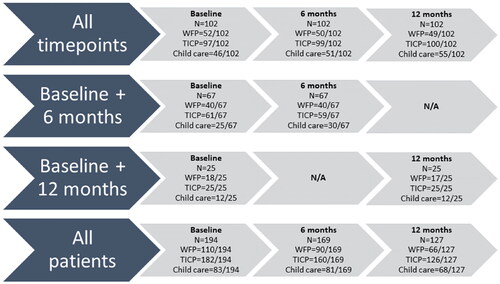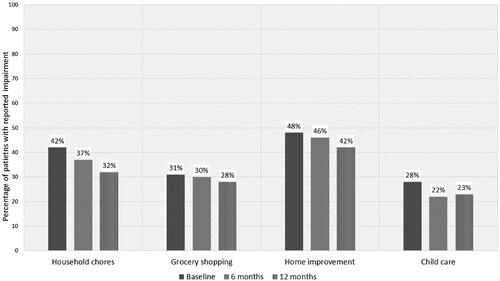Figures & data
Figure 1. Inclusion of patients and explanation of missing data.
Patients were included if they had filled out a PRODISQ questionnaire at baseline and at least 1 follow-up timepoint (i.e. 6 or 12 months). 102 patients provided data for all three timepoints, 67 patients provided data on baseline and 6 months only, and 25 patients provided data on baseline and 12 months only.
All patients provided data on their work-for-pay (WFP) status (inclusion criteria). Only patients with WFP could provide information on presenteeism and overall work impairment. Not all patients filled in the TIC-P questionnaire, and therefore not all patients provided data on impairment in activities of daily living (ADL). Only patients with a filled in TICP, who were taking care of underage children, could provide data about child care.
N/A = not applicable; WFP = work-for-pay.

Table 1. Sample characteristics at baseline.
Table 2. Disease characteristics, work and ADL impairment at baseline and during follow-up.
Table 3. Associations between work-for-pay status, presenteeism, impairments in ADL, and disease-related characteristics/contextual factors.
Supplemental Material
Download PDF (718 KB)Data availability statement
The data underlying this article will be shared on reasonable request to the corresponding author.

